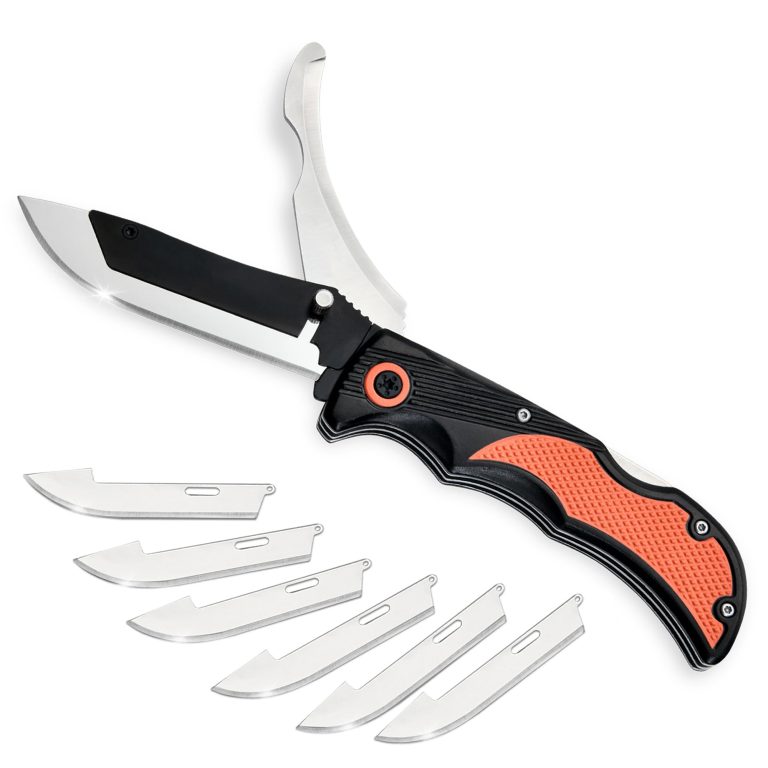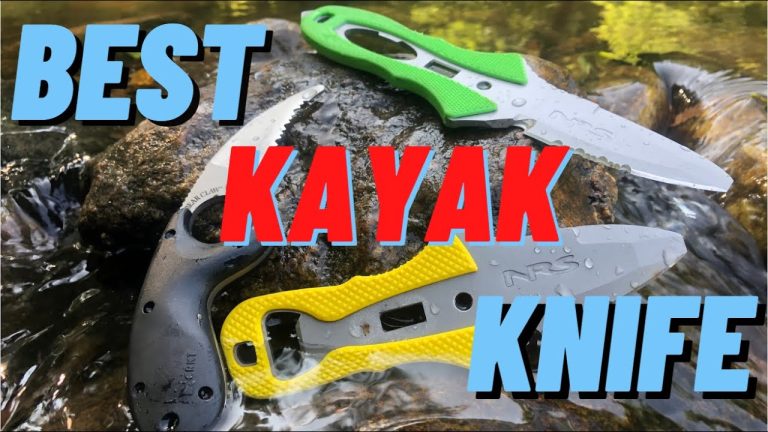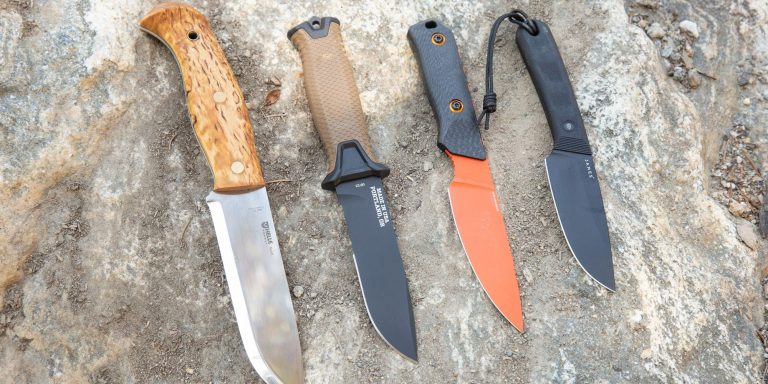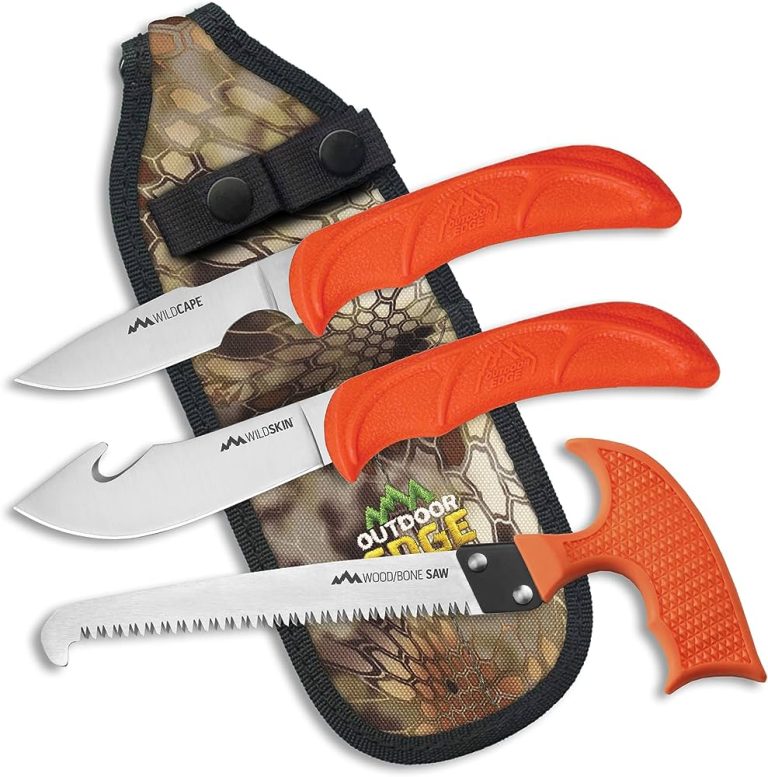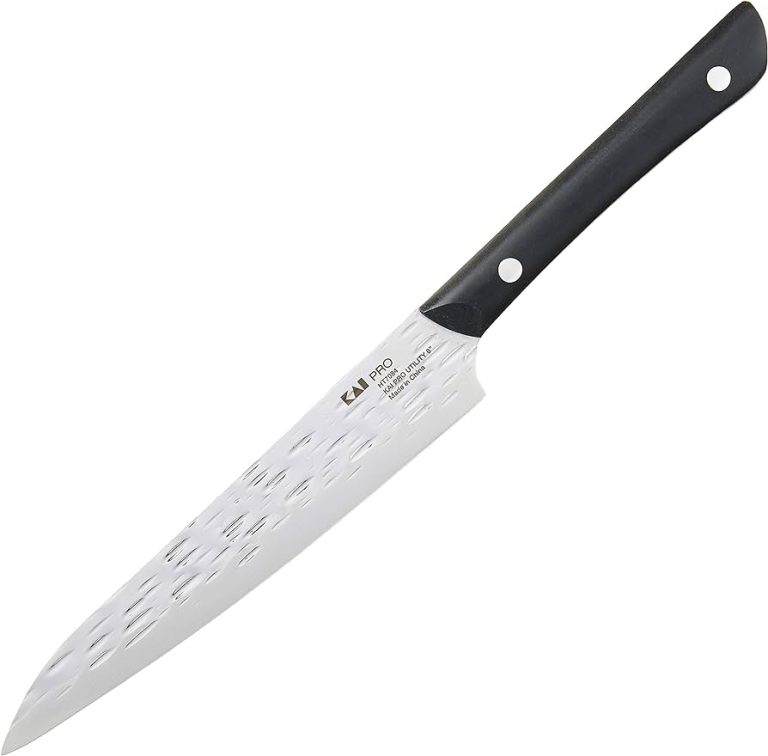The Best Materials for Corrosion-Resistant Kayaking Knives
The best materials for corrosion-resistant kayaking knives are stainless steel and titanium. These materials are highly durable, have excellent resistance to corrosion, and are perfect for use in water sports and adventures.
In addition to their corrosion resistance, stainless steel and titanium offer great strength and an ergonomic design, ensuring a secure grip and precise cutting performance while paddling. Whether you are a recreational kayaker or a professional, these materials provide the longevity and functionality necessary for a reliable and long-lasting kayaking knife.
So, when choosing a corrosion-resistant knife for your kayaking needs, stainless steel and titanium are the top choices to consider.
Factors To Consider When Choosing Corrosion-Resistant Kayaking Knives
Factors to consider when choosing corrosion-resistant kayaking knives include evaluating the materials used, such as stainless steel or titanium, which offer durability and rust resistance, as well as considering the blade design for versatility and functionality in water activities.
When it comes to kayaking, having a reliable and corrosion-resistant knife is essential. Whether you need it for cutting ropes, filleting fish, or for emergency situations, selecting the right materials for your kayaking knife is crucial. Here are a few important factors to consider when choosing corrosion-resistant kayaking knives:
Blade Material
- Stainless Steel: Stainless steel blades are highly popular among kayakers due to their corrosion resistance and durability. They are less prone to rusting, making them ideal for use in saltwater environments.
- Titanium: Titanium blades offer exceptional corrosion resistance and are lightweight, making them easy to handle during kayaking adventures. They also have excellent strength and retain their sharpness well.
- Ceramic: Ceramic blades are exceptionally resistant to rust and are highly durable. They maintain their sharpness for a long time, but they can be brittle and prone to breaking if not used with care.
Handle Material
- Stainless Steel: Stainless steel handles are corrosion-resistant and offer excellent durability. They provide a sturdy grip, ensuring safety and efficiency while using the knife.
- Composite Materials: Handles made of composite materials such as fiberglass-reinforced nylon or G-10 offer excellent corrosion resistance and are lightweight. They provide a comfortable grip and are resistant to weather conditions.
- Rubber: Rubber handles provide a secure grip, even in wet or slippery conditions. They offer good corrosion resistance and are comfortable to hold, making them suitable for kayaking purposes.
Rust-Prevention Coating
- Teflon Coating: Knives with a Teflon coating create a protective barrier, preventing rust and corrosion. This coating also ensures smoother cutting and minimizes friction between the knife and the material being cut.
- DLC Coating: Diamond-like carbon (DLC) coating provides a hard and corrosion-resistant surface, enhancing the durability of the blade. It reduces the risk of rusting and adds an additional layer of protection against wear and tear.
- Cerakote Coating: Cerakote coating offers excellent corrosion resistance and is commonly used in outdoor tools. It provides a durable, thin, and protective layer that helps prevent rust and extends the lifespan of the knife.
Investing in a corrosion-resistant kayaking knife ensures that it will withstand the harsh conditions encountered during your kayaking adventures. By considering the appropriate blade material, handle material, and rust-prevention coating, you can choose a knife that will perform reliably and effectively in any situation.
Top Corrosion-Resistant Blade Materials For Kayaking Knives
Discover the ultimate corrosion-resistant blade materials for your kayaking knives, ensuring durability and longevity on your water adventures. These top-notch materials offer superior resistance against rust and erosion, making them the perfect choice for avid kayakers seeking reliable and long-lasting tools.
The importance of having reliable and corrosion-resistant knives while kayaking cannot be overstated. These knives serve various purposes, from cutting ropes and fishing lines to self-defense in emergency situations. When it comes to choosing the right blade material for your kayaking knife, it’s crucial to prioritize corrosion resistance.
Here, we’ll explore the top corrosion-resistant blade materials for kayaking knives:
Stainless Steel:
- Stainless steel is widely recognized for its excellent corrosion resistance, making it a popular choice for kayaking knives.
- Its chromium content forms a protective layer on the knife, preventing rust and corrosion even in wet and salty conditions.
- Stainless steel blades are durable, low-maintenance, and easy to sharpen.
- Some common stainless steel alloys used in kayaking knives include 440C, 154CM, and VG-10.
Titanium:
- Titanium is renowned for its exceptional strength-to-weight ratio, corrosion resistance, and overall durability.
- It is an ideal material for kayaking knives due to its resistance to saltwater corrosion and its lightweight nature.
- Titanium blades offer excellent corrosion resistance, even in the harshest maritime conditions.
- Though titanium knives can be more expensive than other options, their longevity and performance make them a worthwhile investment.
Ceramic:
- Ceramic blades are gaining popularity in the kayaking world due to their remarkable corrosion resistance and sharpness retention.
- These blades are resistant to rust and are impervious to saltwater, ensuring they maintain their performance in harsh marine environments.
- Ceramic knives are lightweight and offer exceptional cutting capabilities, making them ideal for a range of kayaking tasks.
- It is worth noting that ceramic blades can be brittle and may require more careful handling than other materials.
When it comes to selecting a corrosion-resistant blade material for your kayaking knife, stainless steel, titanium, and ceramic are top contenders. Each material has its unique benefits, so consider your specific needs and preferences before making a choice. Ultimately, investing in a high-quality knife with the right blade material will ensure your safety and enhance your kayaking experience.
Best Handle Materials For Corrosion-Resistant Kayaking Knives
Kayaking knives need handle materials that are corrosion-resistant for durability. Discover the best options to enhance your kayaking experience.
When it comes to choosing the best handle material for a corrosion-resistant kayaking knife, there are several options available that offer durability, grip, and resistance to the harsh marine environment. Whether you are a seasoned kayaker or a beginner, having a reliable and corrosion-resistant knife is essential for your safety and functionality on the water.
Let’s explore three popular handle materials for kayaking knives: G10, FRN (Fiberglass Reinforced Nylon), and Micarta.
G10
- G10, a high-pressure fiberglass laminate, is a popular choice for handle material in kayaking knives due to its excellent strength and durability.
- It is made by compressing layers of fiberglass cloth with epoxy resin, resulting in a durable, lightweight, and corrosion-resistant material.
- G10 handles provide a firm grip even in wet conditions, thanks to their slightly textured surface.
- This material is not only resistant to corrosion but also withstands UV radiation, making it ideal for long hours under the sun.
Frn (Fiberglass Reinforced Nylon)
- FRN, also known as Fiberglass Reinforced Nylon, is a synthetic material commonly used for knife handles due to its impressive strength-to-weight ratio.
- It is made by embedding glass fibers into a nylon matrix during the manufacturing process, resulting in a lightweight and durable material.
- FRN handles are resistant to corrosion, chemicals, and heat, making them ideal for marine environments and kayaking adventures.
- With its textured surface, FRN provides a secure grip, even when wet, ensuring optimal control and minimizing the risk of accidents.
Micarta
- Micarta is a composite material made from layers of fabric, such as linen or paper, soaked in resin and compressed under high pressure.
- Kayaking knives with Micarta handles are favored for their exceptional durability, strength, and resistance to corrosion.
- The material is highly resistant to water and moisture absorption, making it perfect for marine activities like kayaking.
- Micarta handles offer a comfortable grip, even in wet conditions, ensuring precise control while cutting or slicing.
When choosing a corrosion-resistant kayaking knife, consider the handle material. Options like G10, FRN, and Micarta provide excellent durability, corrosion resistance, and grip, making your kayaking experience safer and more enjoyable. Ensure to select a knife with a handle material that suits your preferences and needs on the water.

Credit: www.reddit.com
Frequently Asked Questions Of The Best Materials For Corrosion-Resistant Kayaking Knives
What Are The Best Materials For Corrosion-Resistant Kayaking Knives?
The best materials for corrosion-resistant kayaking knives include stainless steel, titanium, and ceramic. Stainless steel is durable and resistant to rust, while titanium is lightweight and offers excellent corrosion resistance. Ceramic knives are also corrosion-resistant, although they may be more prone to breakage if not handled with care.
Conclusion
Choosing the right materials for corrosion-resistant kayaking knives is essential for ensuring their longevity and effectiveness in challenging environments. By considering factors such as stainless steel grades, titanium, and ceramic coatings, kayakers can ensure that their knives will withstand the corrosive effects of saltwater and other harsh conditions.
Stainless steel, particularly those with higher chromium and molybdenum content, offer excellent resistance to corrosion, while titanium provides lightweight durability. Ceramic coatings not only enhance corrosion resistance but also offer additional benefits such as improved hardness and reduced friction. Ultimately, the best choice of material will depend on individual preferences, budget, and specific kayaking needs.
Whether exploring calm lakes or venturing into saltwater, investing in high-quality corrosion-resistant kayaking knives will ensure a safe and enjoyable experience on the water.

